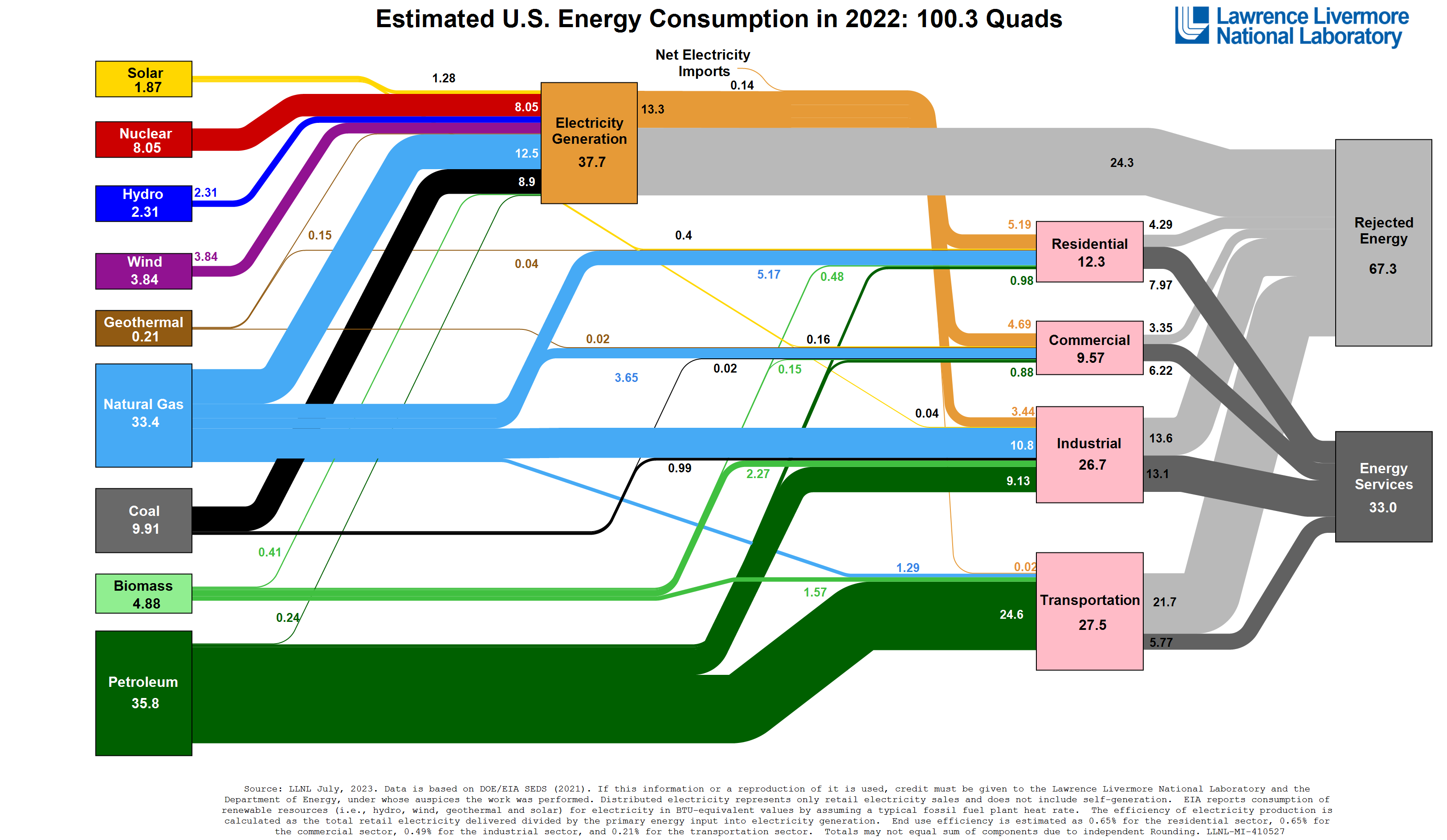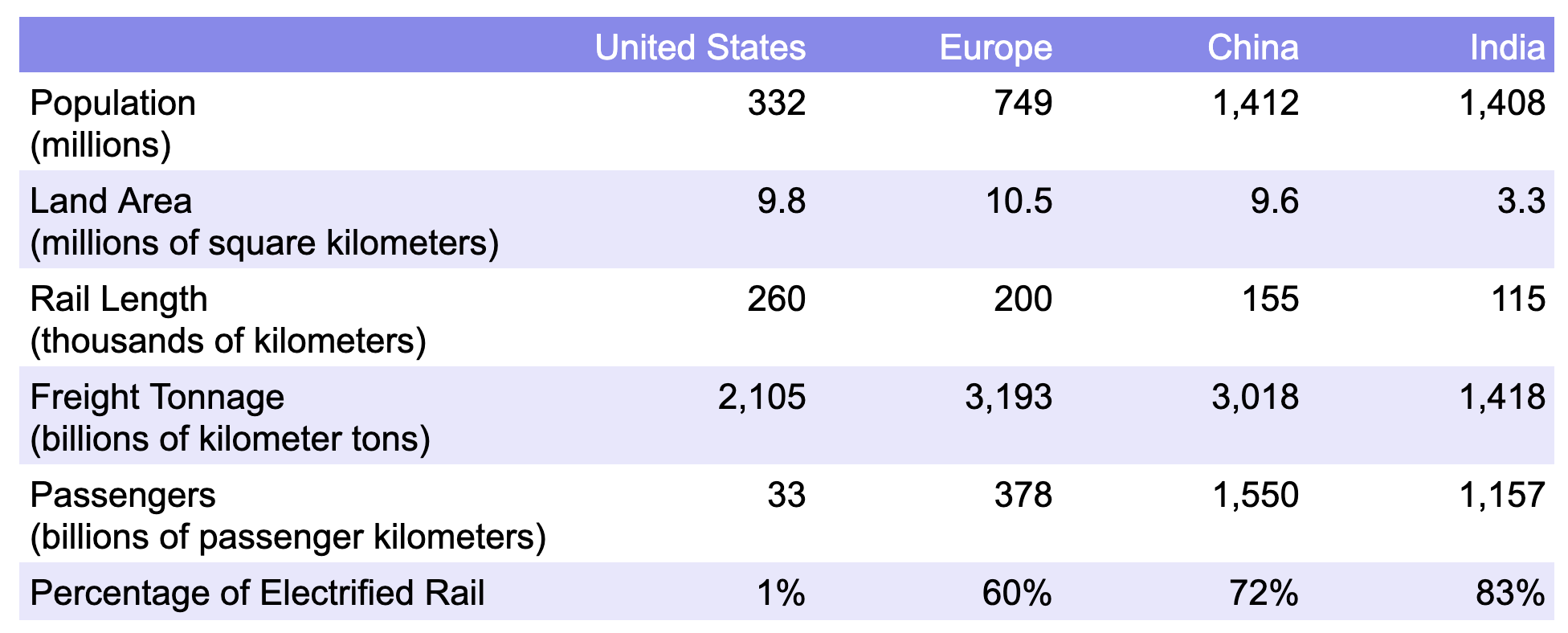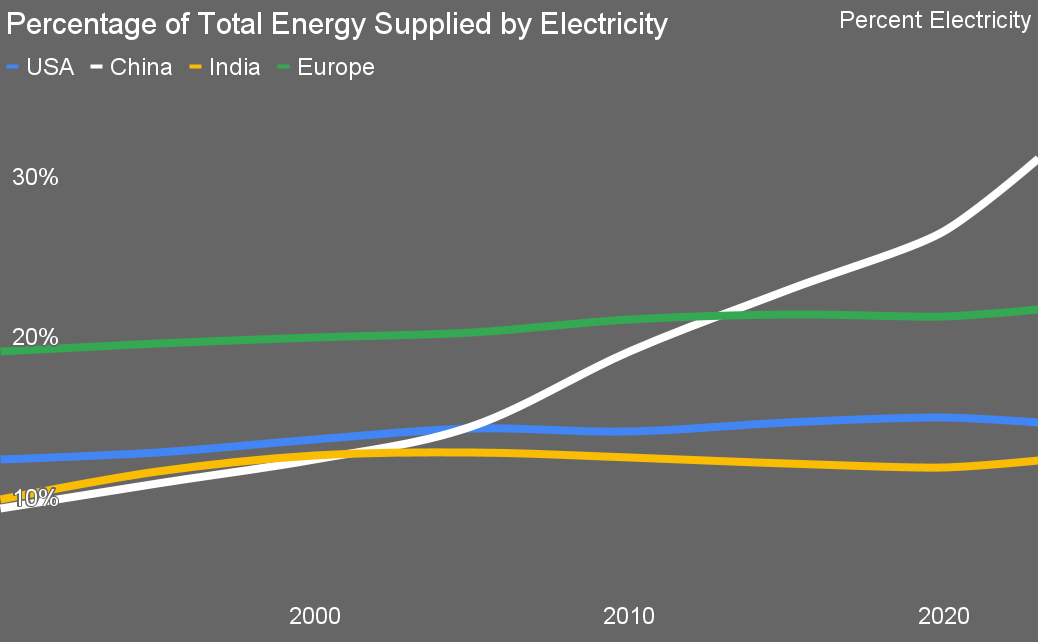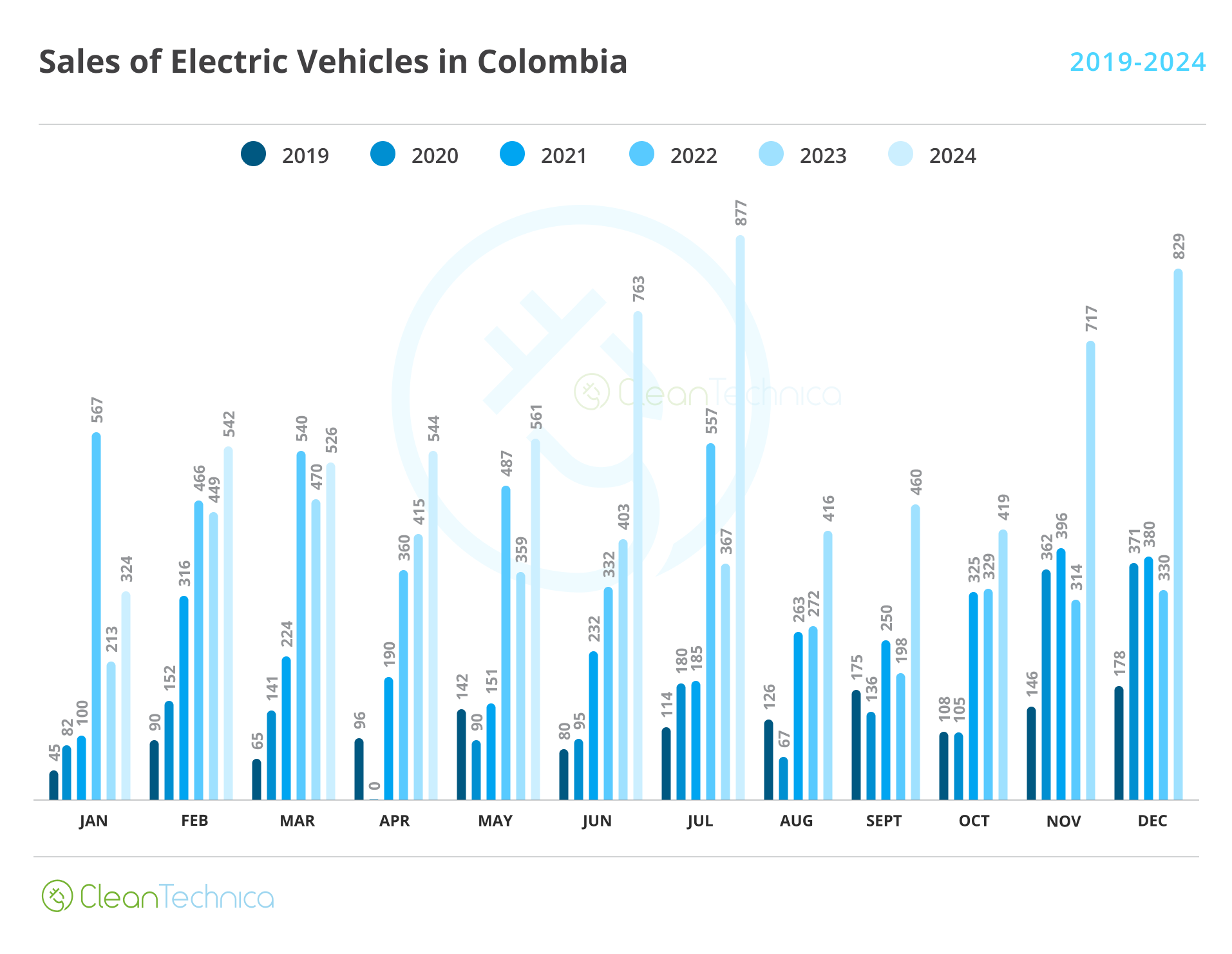Sign up for daily news updates from CleanTechnica on email. Or follow us on Google News!
For close to twenty years, it’s been clear that electrifying everything is a key climate change wedge. Mark Z. Jacobson’s work in the USA and then internationally with his 100% Renewables by 2050 modeling laid much of the groundwork for this. Luminaries from around the world, such as Saul Griffiths, Hans-Josef Fell, Fatih Birol, and Mark Diesendorf, have been focused on this key solution as well.
In my regularly iterated Short List of Climate Actions That Will Work, electrify everything is first on the list as a result. Why is that?

Look at the huge gray box on the upper right of this US energy flows diagram labeled rejected energy. That’s energy that comes into the US economy that doesn’t provide any useful services, as it just gets lost to inefficient processes.
It’s almost entirely waste heat from burning fossil fuels.
By contrast, picking solar energy in the form of electricity at the top left, it goes into the electrical generation box and comes out the other side virtually undiminished. Then it flows into the energy services boxes of residential, commercial, industrial, and transportation demand sectors and is used at very high efficiencies. Very little solar energy is wasted.
In fact, solar or wind energy flowing into heat pumps actually triple their energy services, because heat pumps draw around three units of heat energy from the environment for every one unit of electricity that is used to power them. That’s part of why Saul Griffith’s detailed work in the space for the US Department of Energy in the 2010s found that only 42% of total primary energy inputs were actually required in a future electrified and decarbonized economy.
Mark Z. Jacobson’s modeling shows much the same results, and I’ve recreated the math more simply. It’s not hard math to do. Electrifying everything and providing the electricity from low-carbon sources instead of from burning fossil fuels is vastly more efficient end-to-end. Jacobson’s work shows that it’s vastly cheaper too.
Oh, and it addresses climate change requirements nicely, thank you very much. When we stop burning fossil fuels for energy, all of the carbon dioxide, methane leakage, and nitrous oxide emissions that come along with those energy pathways goes away as well. It’s worth mentioning that all of the air pollution that harms our children’s lungs goes away too.
The latter points are why the International Monetary fund includes not only direct and indirect subsidies but also negative externalities in its calculations of global subsidies for fossil fuels. In 2023, direct and indirect subsidies were $2 trillion, and the negative externalities of climate change and health-harming air pollution were $5 trillion.
With every passing year that we don’t put a cap on emissions and start forcing them down rapidly, the negative externality costs increase. The social cost of carbon calculations that the US Environmental Protection Agency and Canada have harmonized on put the cost around $200 per metric ton of carbon dioxide or equivalent this year. That rises to about $300 per ton in 2030 and almost $400 per ton in 2040. The European Union gets this too. Its budgetary guidance for European efforts is well aligned with those figures. Want to burn gas in 2040? Expect to pay €144 per MWh in carbon price.
Since this has been increasingly obvious for a couple of decades, it’s very reasonable to ask how different major economies are doing on this front. After all, the wedges for fairly rapid electrification are well understood.
For transportation, the large majority of energy and emissions are for things with wheels, mostly rubber on roads, but also steel on rails. Let’s start with rail.

I put this table together in 2023. India is targeting 100% rail electrification by the end of this year. China has jumped upward to at least 75%. Europe hasn’t moved much, but also has relatively low freight rail compared to road freight. The USA, of course, is far behind, with that 1% being only urban transit and a subset of the incredibly limited commuter and regional rail in the country, dominated as rail is by freight firms which own the tracks.
That’s the only segment China isn’t leading in. On ground transportation, it’s electrified an enormous number of its passenger vehicles, from huge swaths of personal and shared bikes and scooters, to 600,000 electric buses, to now over half of the new cars sold having plugs. Its utility and urban trucks are massively electrified as well, seeing roughly 500,000 units plying the roads of its cities and ports. On the water, it has battery-powered 700-unit container ships plying 1,000 km journeys on the Yangtze, and a thousand-passenger battery-powered cruise ship running tourists through the Three Gorges.
As China hasn’t had significant recoverable reserves of natural gas, it hasn’t fallen into the same trap of home, commercial, and industrial heating with fossil methane, but instead electrified a lot more of it. The last time I talked to one of my global contacts, Swarandeep Singh, a Swedish citizen and ABB VP and engineer, he was in Shanghai as he electrified BASF’s massive new integrated chemical processing plant.
Of course, if China actually is leading in electrification, it should be obvious from the data, shouldn’t it? We know how much energy every region uses and we know how much electricity they use. For America, India and China, that’s just national statistics, but as Europe is a much more unified geography, it’s worth treating it as a singular entity. For that purpose, we’ll use the ENTSO-E perimeter, which includes the EU and a bunch of other European countries that align with it on energy policy, currency, trade policy, or all three.

One of these things is not like the other, one of these things is not the same. China, in part due to the accident of geology mentioned above, has been increasing the percentage of energy services delivered via electricity since 1990 and since 2005 has been rapidly increasing it. In the past three years it’s accelerated again. That’s part of why the predicted peak of Chinese emissions for this decade is incredibly likely to be this year, six years ahead of the country’s target. Key emissions segments are falling rapidly in China, so my long-standing prediction that China will turn down its carbon curve as rapidly as it turned it up appears to be accurate.
India was doing well during the 1990s, but has effectively flatlined since. Recent efforts out of the country are mixed. As noted, heavy rail is going to be 100% electric this year. Two- and three-wheeled vehicle electrification is shooting up. The country is targeting 50,000 electric buses on its roads by 2027. But it’s also pivoted to spend billions on unconventional oil and gas extraction and strategic oil and gas reserves, as well as apparently turning up the construction of coal plants much more than the construction of wind and solar farms. That’s going to require watching. If the coal plants create rapid electrification, with its much greater efficiencies, and wind, solar, transmission, and storage soar as well, it might be a good policy.
Europe’s electrification started higher than the rest of the world in 1990. Like India and China, it didn’t have vast recoverable bodies of natural gas spread across the continent. But between North Sea gas, with multiple countries building massive offshore facilities, and Russian gas through pipelines, pushed upon the German economy especially by a very well-rewarded former Chancellor, Europe didn’t increase its lead much. Electrification has been creeping up when climate reality makes it clear that electrification needs to shoot upward.
And then, America. Blessed and so also cursed with abundant oil and natural gas and simply cursed with an oligarchy that has captured the right-wing in the country, it was merely okay in terms of electrification in 1990, increased a bit in the 1990s and has barely budged since. Given that the US Inflation Reduction Act, the US Transportation Blueprint, and the US Hydrogen Strategy all put far more emphasis on molecules for energy than they should, and given that the USA has decided that the cheapest, most advanced electric vehicles, solar panels, wind turbines and batteries in the world — China’s — need to be massively penalized with unprecedentedly high tariffs, this is unlikely to change.
Remember the mention of the European Union’s budgetary guidance above? That budgetary guidance is a clear signal that the EU is going to be pulling the levers under its control — and there are several — to increase the emissions trading system price a lot, over $300 in 2030 and about $400 in 2040. Because energy efficiency through electrification is such a powerful lever, the geography that electrifies most will pay the lowest carbon price on exports to Europe via their carbon border adjustment mechanism.
A full 17% of all US exports are to Europe. A full 17% of US exports are going to be hit with the carbon border adjustment mechanism. All of those exports are going to struggle against increasingly low carbon exports from China as well as European domestic manufacturing. India has become much more a trading nation since 1980, so its European exports are at risk due to its energy policies as well.
The country that electrifies most rapidly and builds the most renewables to power its electrified economy will be the most competitive economy globally. One country seems to understand this, but other major economies are clearly not acting on any understanding that they might have.
Have a tip for CleanTechnica? Want to advertise? Want to suggest a guest for our CleanTech Talk podcast? Contact us here.
Latest CleanTechnica.TV Videos
CleanTechnica uses affiliate links. See our policy here.
CleanTechnica’s Comment Policy





